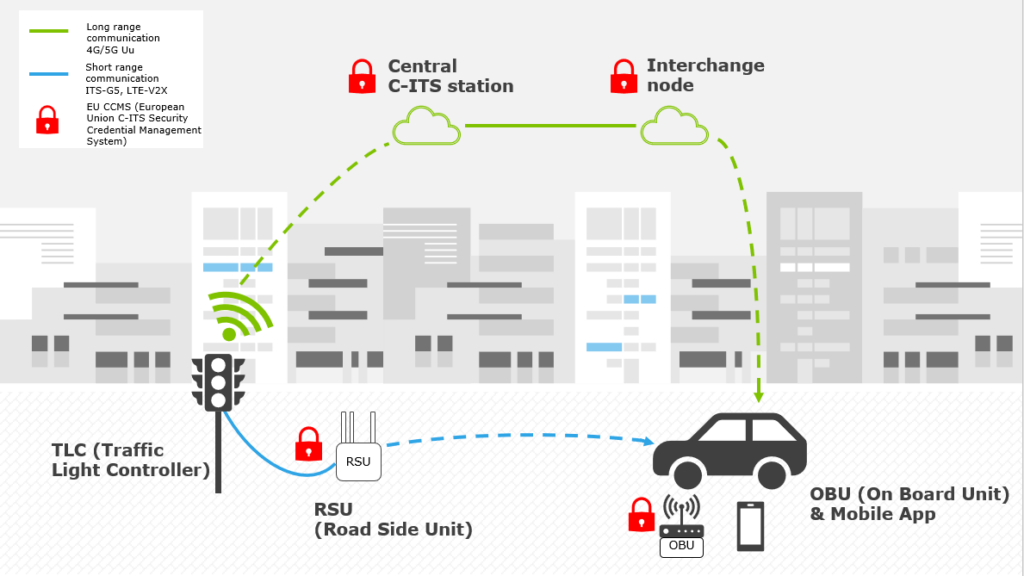C-ITS Development
One of the key elements of C-ITS systems is the C-ITS station, and there can be different types of stations:
- roadside C-ITS station (fixed), for example together with traffic light controllers
- central C-ITS station (fixed), part of a C-ITS central system and being connected to multiple roadside stations
- vehicle C-ITS station (mobile), integrated in cars and trucks
- personal C-ITS station (mobile), for example in hand-held devices
In addition to the C-ITS stations, another central element of the system architecture are interchange nodes, which are utilized to transmit the C-ITS messages to the subscribers, i.e., C-ITS service providers and eventually to the end users.
Regarding to the communication technologies, there are two alternative approaches:
- Short range communication utilizing ITS-G5, a wireless short-range communication technology (based on the IEEE-802.11p standard) tailor made for vehicle-to-vehicle communication, transporting small data volumes extremely fast. The name G5 is derived from the frequency band (5.9GHz). With this communication method RSUs are utilized to communicate directly with OBUs in the vehicles. This communication type is presented in the picture with blue color. Another option for short range communication is LTE-V2X, also utilizing 5.9GHz frequency band but using standardized 4G LTE mobile cellular connectivity to exchange messages.
- Long range communication utilizing mobile network communication technologies such as 4G and 5G. With this communication technology roadside equipment is not directly communicating with vehicles, but rather via centralized system utilizing central C-ITS stations and interchange nodes. This communication type is presented in the picture with green color.
In order to secure trust between all road users and infrastructure owners within the C-ITS systems EU has created Security Credential Management System for C-ITS (EU CCMS). This trust model is based on public key infrastructure method, and it is presented in the picture with lock icons colored in red.
